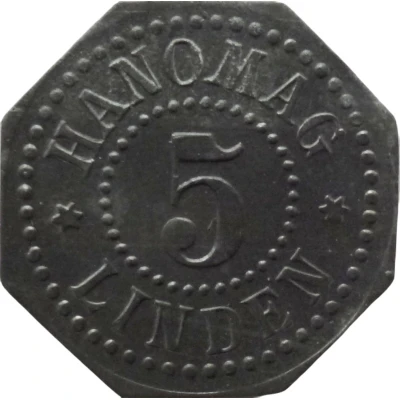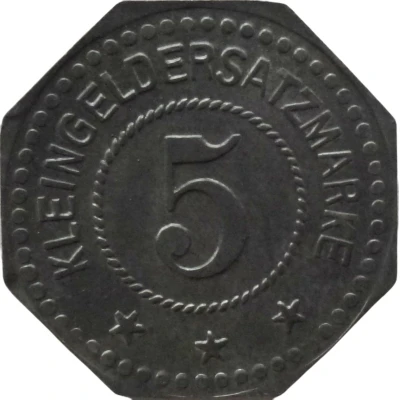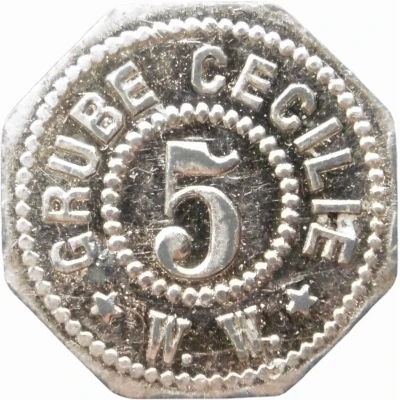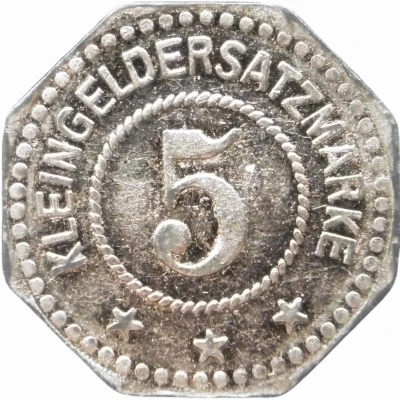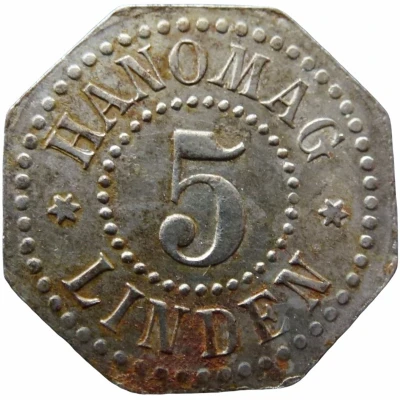
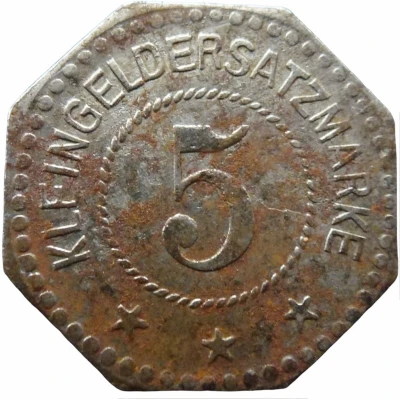

© Willem63 (CC BY-NC-SA)
5 Pfennigs - Linden (Hanomag) ND
| Iron | 2.2 g | 19.3 mm |
| Issuer | German notgeld (Germany) |
|---|---|
| Type | Standard circulation coin |
| Value | 5 Pfennigs (5 Pfennige) (0.05) |
| Currency | Mark (1914-1924) |
| Composition | Iron |
| Weight | 2.2 g |
| Diameter | 19.3 mm |
| Thickness | 1.1 mm |
| Shape | Octagonal (8-sided) |
| Technique | Milled |
| Orientation | Medal alignment ↑↑ |
| Demonetized | Yes |
| Updated | 2024-10-04 |
| Numista | N#308183 |
|---|---|
| Rarity index | 97% |
Reverse
Pearl rim, legend surrounding rope circle with denomination centered
Script: Latin
Lettering:
KLEINGELDERSATZMARKE
5
★ ★ ★
Edge
Plain
Comment
Menzel: BBBFa: Maschinenbau Gesellschaft
On June 6, 1835, in Linden Hanover, the mechanical engineering and Iron foundry was founded by George Egestorf and from 1871 the name “Hannoversche Maschinenbau Aktien Gesellschaft” arose.
this company was known as a manufacturer of steam plows, boilers, locomotives and steam winches. The factory was
based in Linden. In 1904 the name HANOMAG appears for
the first, abbreviation of "Hannoverschen Machinenbau Aktien Gessellschaft".
Interesting fact
One interesting fact about the 5 Pfennigs - Linden (Hanomag) ND coin from German notgeld (Germany) made of Iron weighing 2.2 g is that it was issued during a time of economic crisis in Germany, specifically during the hyperinflation period of the 1920s. The coin was part of a series of emergency coins minted by the German government to address the shortage of small change caused by the rapid inflation. Despite its small denomination, the coin was made of iron, which was a more affordable material than traditional metals like copper or silver, and it was designed to be easily identifiable and difficult to counterfeit. Today, this coin is a sought-after collector's item and a reminder of a unique period in German history.
